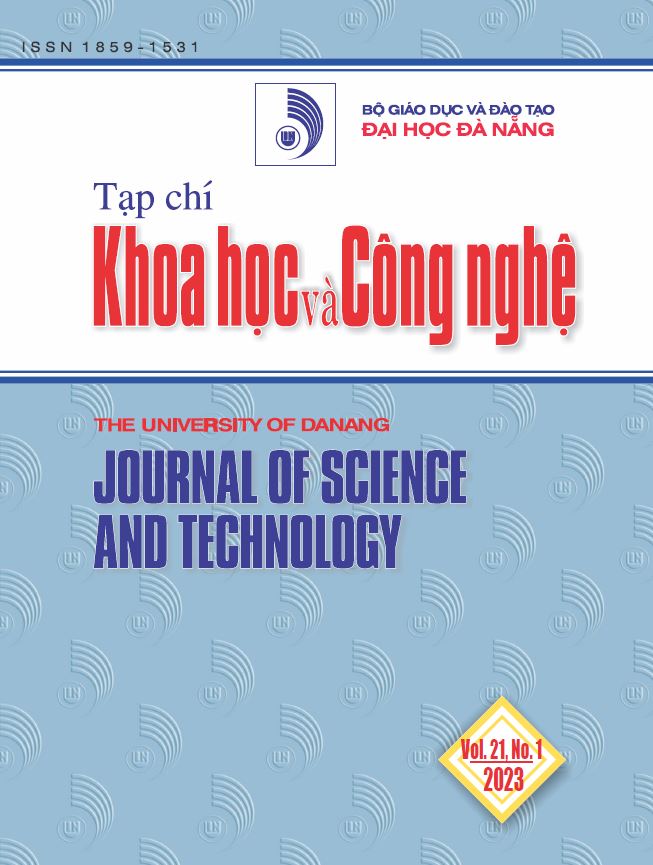Nghiên cứu ảnh hưởng của cấp cường độ chịu nén của bê tông và ăn mòn cốt thép đến khả năng chịu lực uốn của dầm bê tông cốt thép sử dụng phần mềm Abaqus
 Tóm tắt: 384
Tóm tắt: 384
 |
|  PDF: 214
PDF: 214 
##plugins.themes.academic_pro.article.main##
Author
-
Nguyễn Văn ChínhTrường Đại học Bách khoa - Đại học Đà NẵngBùi Quang HiếuTrường Đại học Bách khoa - Đại học Đà NẵngLê Xuân DũngTrường Đại học Bách khoa - Đại học Đà NẵngNguyễn Văn VũCông ty TNHH StructerreLý Văn ThịnhCông ty MEICO
Từ khóa:
Tóm tắt
Bài báo nghiên cứu ảnh hưởng của cấp cường độ chịu nén của bê tông và cấp ăn mòn cốt thép đến khả năng chịu lực uốn của dầm bê tông cốt thép (BTCT) thông qua mô phỏng bằng phương pháp phần tử hữu hạn sử dụng phần mềm Abaqus. Các dầm được khảo sát có kích thước150x200x2100 (mm) với các cấp cường độ bê tông là B20, B30 và B45 và các cấp ăn mòn cốt thép là 0%, 2%, 4%, 8%, 10% và 15%. Kết quả chỉ ra rằng, mô hình Abaqus được sử dụng có độ tin cậy cao khi sự chênh lệch giữa khả năng chịu lực của mô hình mô phỏng và thí nghiệm của dầm đối chứng và dầm ăn mòn lần lượt là 1,2% và 0,6%. Kết quả từ mô hình phân tích cũng cho thấy, cốt thép bị ăn mòn làm suy giảm cả giới hạn chảy và khả năng chịu lực uốn của dầm BTCT. Cấp cường độ chịu nén của bê tông ảnh hưởng nhỏ đến khả năng chịu lực uốn trong khi sự ăn mòn cốt thép dọc ảnh hưởng lớn đến khả năng chịu lực uốn của dầm BTCT.
Tài liệu tham khảo
-
[1] Lambert P, “Reinforced concrete-history, properties and durability”, Technical note, Corrosion Prevention Association, 2022.
[2] Rodriguez J, Ortega LM, Casal J, “Corrosion of reinforcing bars and service life of reinforce concrete structures: corrosion and bond deterioration”. In: International conference on concrete across borders, Odense, Denmark, 1994, 315–326
[3] McLeish A, Structural assessment, manual for life cycle aspects of concrete in buildings and structures, Taywood Engineering Limited, UK, 1987, B4.1–B4.22.
[4] Ahmad S, “Reinforcement corrosion in concrete structures, its monitoring and service life prediction-a review”, Cement and Concrete Composite, 25, 2003, 459–471.
[5] Mangat PS, Molloy BT, “Factors influencing chloride induced corrosion of reinforcement in concrete”, Materials and Structures 25, 1992, 404–411.
[6] Al-Sulaimani GJ, Kaleemullah M, Basunbul IA (1990) “Influence of corrosion and cracking on the bond behaviour and strength of reinforced concrete members”, ACI Structure Journal 87(2), 1990, 220–231.
[7] Rodriguez J, Ortega LM, Casal J. Load carrying capacity of concrete structures with corroded reinforcement. Construction and Building Materials, 11(4), 1997, 239–248
[8] Okada K., Kobayashi K., and Miyagawa T, “Influence of Longitudinal Cracking Due to Reinforcement Corrosion on Characteristics of Reinforced Concrete Members”, ACI Structural Journal, 1988, 134-140.
[9] Trần Văn Toản, “Phân tích mô hình số dầm bê tông cốt thép chịu uốn”, Tạp chí Khoa học Kỹ thuật Thủy Lợi và Môi trường, Số 57, 2017, 3-10.
[10] Zhao G, Xu J, Li Y, Zhang M, “Numerical analysis of the degradation characteristics of bearing capacity of a corroded reinforced concrete beam”, Advanced in Civil Engineering, 2492350, 2018, 1-10.
[11] Dassault Systèmes. Abaqus 6.14-Abaqus Analysis User's Guide; Dassault Systèmes: Velizy-Villacoublay, France, 2014.
[12] Bui QH, Kabeyasawa T, Hosokawa Y. Static test on friction coefficient of concrete foundation. Young, 2013; 199(184.4).
[13] Sargin M, Stress–strain relationship for concrete and the analysis of structural concrete section, Solid Mechanics Division, University of Waterloo; 1971.
[14] Arab AA, Finite element modelling of pretensioned concrete girder: A methodological approach with applications in large strands and end zone cracking, Southern Illinois University, 2012.
[15] Huang T, Jianxin P, Linfa X, Xinhua L, “Numerical simulation of corroded reinforced concrete beam strengthened by a steel plate with different strengthening schemes”, Advanced in Civil Engineering, 4236943, 2020, 19 pages
[16] Wang XH, Liu XL, “Modeling the flexural carrying capacity of corroded RC beam”, Journal of Shanghai Jiaotong University, 13(2), 2008, 129–135.
[17] Wu Q, Yuan YS, “Experimental study on the deterioration of mechanical properties of corroded steel bars”, China Civil Engineering Journal, 41(12), 2008, 42–47.
[18] O’Flaherty FJ, Mangat PS, Lambert P, Browne EH, “Effect of under reinforcement on the flexural strength of corroded beams”. Materials and Structures, 41, 2008, 311–321.
[19] Nguyen CV, Lambert P, “Effect of current density on accelerated corrosion of reinforcing steel bars in concrete”. Structure and Infrastructure Engineering, 14(11), 2018, 1535-1546.
[20] TCVN 5574: 2018: “Thiết kế kết cấu bê tông và bê tông cốt thép”, 2018.
[21] Abdullah AA, “Effect of degree of corrosion in properties of reinforcing steel bars”, Construction and Building Materials, 15, 2001, 361–368.
[22] Du YG, Clark LA, Chan AHC, “Residual capacity of corroded reinforcing bars”, Magazine of Concrete Research, 57 (3), 2005, 135–147.
[23] Rajib KB, Mitsuyasu I, Nobuhiro C, Kunihiko U, “Effect of non-uniform rebar corrosion on structural performance of RC structures: A numerical and experimental investigation”, Construction and Building Materials, 230 (116908), 2020.
[24] Zhu W, François R, “Corrosion of the reinforcement and its influence on the residual structural performance of a 26-year-old corroded RC beam”. Construction and Building Materials, 51, 2014, 461–472.



